Xidi Ancient Village Scenic Area is located in Xidi Town, Yixian County, Huangshan City, Anhui Province, covering an area of 10.7 square kilometers. It is a Traditional Chinese Village, a Famous Historical and Cultural Village in China, and a Major National Historical and Cultural Site Protected at the National Level. On December 2, 2000, the ancient villages in Southern Anhui represented by Xidi Village were inscribed on the UNESCO World Cultural Heritage List; on May 5, 2011, Xidi Village Scenic Area was officially awarded the title of "National 5A-Level Tourist Attraction" by the China National Tourism Administration; in December 2021, it was selected into the first batch of UNESCO's "Best Tourism Villages" list. Xidi Village currently preserves 3 intact ancestral halls, 1 memorial archway, and 155 ancient residences, known as the "Museum of Ming and Qing Residences" and "People in the Peach Blossom Land".
History and Culture
Xidi Village was first founded during the Huangyou period of the Northern Song Dynasty, developed in the mid-Jingtai period of the Ming Dynasty, and flourished in the early Qing Dynasty. During the Huangyou period of the Northern Song Dynasty, Hu Shiliang, the fifth-generation grandson of Hu Changyi, traveled to Jinling (present-day Nanjing) on official business. Passing through Xidi Post, he was attracted by the surrounding mountains, beautiful scenery, and fertile soil, so he moved his family from Kaoshui, Wuyuan to Xidi. Since then, they have engaged in both farming and studying here and thrived.
Xidi Village has a profound cultural heritage, boasting two national intangible cultural heritages: Huizhou Three Carvings (wood carving, stone carving, and brick carving) and Huizhou Traditional Residence Construction Techniques. The village takes a vertical street and two streamside roads as the main framework, forming a street and lane system that mainly faces east and extends north and south. All streets and lanes are paved with Yixian blue stone. Most ancient buildings are of wood structure with brick wall protection, featuring rich and colorful wood carvings, stone carvings, and brick carvings. The design and layout of the lanes and buildings are coordinated. With flexible spatial changes and simple and elegant architectural colors, it is a typical representative of Chinese Huizhou-style architectural art.
Major Attractions
Hu Wenguang Memorial Archway
Built in the 6th year of the Wanli reign of the Ming Dynasty (1578), commonly known as "Xidi Archway", it is located at the entrance of Xidi Village, Xidi Town. The building covers a length of 15.75 meters, a width of 8.1 meters, and an area of 127.6 square meters, adopting a three-bay, four-column, and five-story architectural form. It was granted by the imperial court to commend Hu Wenguang for his outstanding political achievements during his 32 years of official service, allowing him to erect it in his hometown. The archway is 12.3 meters high and 9.95 meters wide, built with Yixian blue stone. There are rectangular stone piers under the main columns, and the stone columns at both ends are decorated with drum-shaped stone bases. Two pairs of reclining stone lions are carved on the front and back of the middle two columns to support the beam columns, with vivid shapes. The archway is adorned with hollow relief carvings of exquisite craftsmanship and diverse styles. The plaques on the east and west sides of the archway are inscribed with the eight characters "Jingfan Shouxiang" (Prime Minister of Jingfan) and "Jiaozhou Cishi" (Prefect of Jiaozhou) respectively.

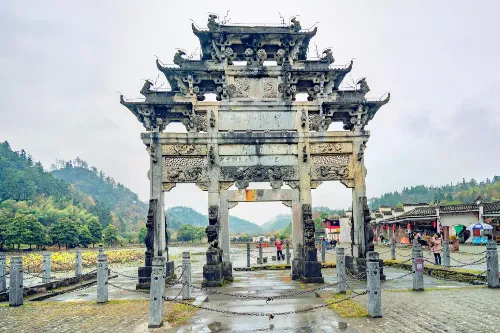
Jing'ai Hall
Originally the residence of Hu Shiheng, the 14th-generation ancestor of the Hu family in Xidi, it was first built during the Wanli reign of the Ming Dynasty (1563-1620) and later destroyed by fire. During the reconstruction in the Qianlong reign of the Qing Dynasty, due to the reproduction and prosperity of the Hu family's descendants, it was expanded into an ancestral hall. It is a typical Huizhou-style brick-and-wood structure covering an area of 1,800 square meters, and also the largest existing ancestral hall in Xidi Village. It was a place for worshipping ancestors, educating descendants, uniting the clan, and holding various religious activities. A stream flows around the hall, and it is now opened as the "Xidi Folk Custom Exhibition Hall".
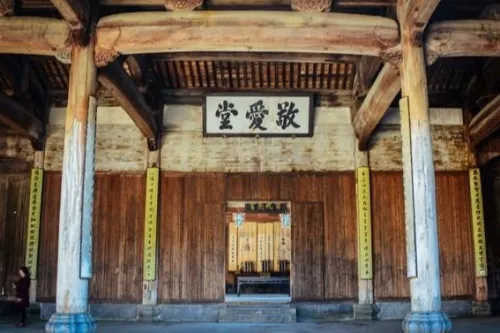

Zoumalou (Horse-Trotting Building)
It features a unique architectural style, exquisite interior decoration, and superb wood carving craftsmanship, demonstrating the advanced architectural skills and artistic level of the time.
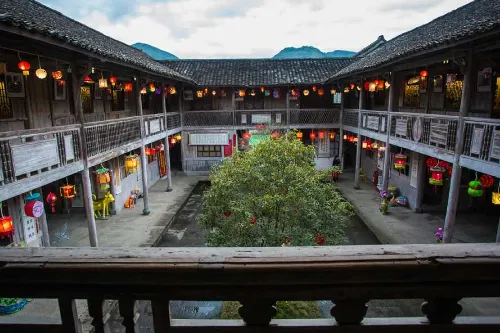
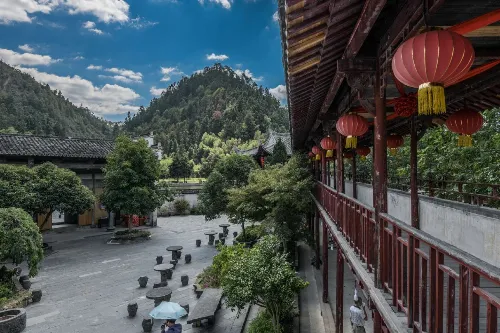
Kuanggu Zhai (Ancient Study)
Built in the 1st year of the Kangxi reign of the Qing Dynasty (1662), it covers an area of 130 square meters.
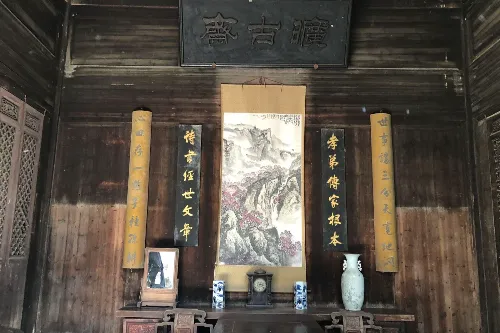
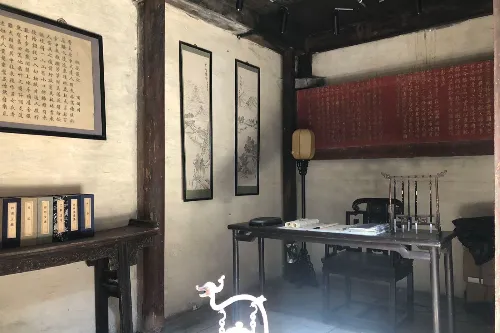
Ruiyu Ting (Jade Court)
It houses plaques of Xidi Ancient Village, and the famous Huizhou merchant couplet "Happiness comes from hardship; benefits arise from tolerance" is carved here.
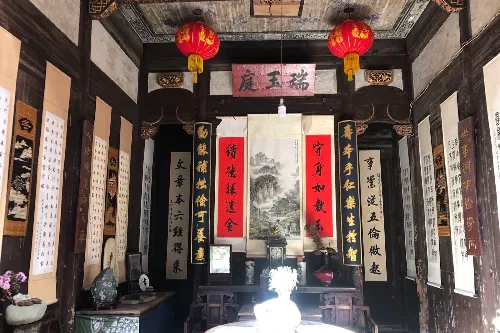
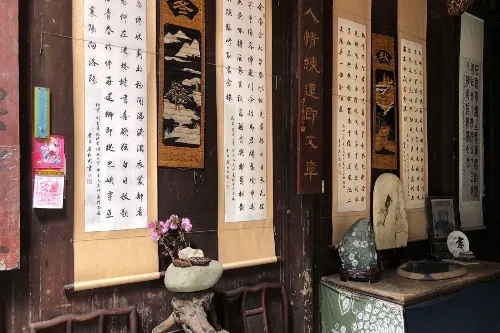
Taoli Yuan (Peach and Plum Garden)
Located in the middle of Henglu Street, it was built during the Xianfeng reign of the Qing Dynasty (1831-1861). Composed of the main house and a courtyard, it was the former residence of Hu Yuanxi, a Huizhou merchant in Xidi, and also the only building in Xidi that combines residence and study. On both sides of the hall in the back courtyard, there are 12 carved wooden boards inlaid with the full text of the calligraphic lacquer carving "Ode to the Old Drunkard's Pavilion", which was created by Huang Yuanzhi, a calligrapher from ancient Yixian during the Kangxi reign of the Qing Dynasty.
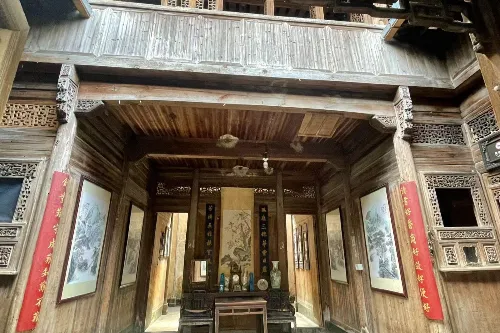
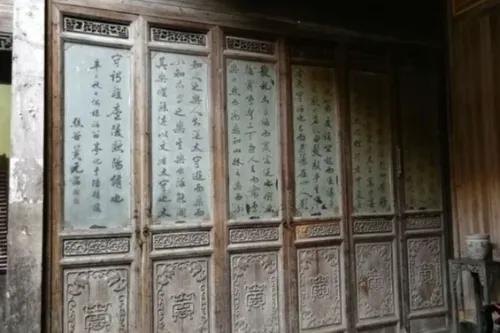
Xiyuan (West Garden)
It is a typical Huizhou-style garden building among ancient Huizhou residences. Its wonderful feature lies in the echo between the house and the courtyard, and the connection between the courtyard and nature. It was the former residence of Hu Wenzhao, the 25th-generation ancestor of the Hu family in Xidi, built in the Daoguang reign of the Qing Dynasty (1824 AD), with a history of more than 180 years.

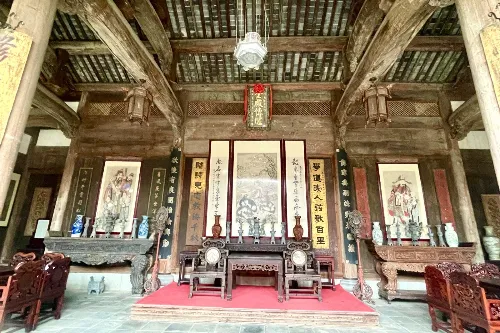
Dongyuan (East Garden)
Opposite to Xiyuan (West Garden), it also has exquisite architecture and a unique layout, reflecting the characteristics of Huizhou-style architecture.

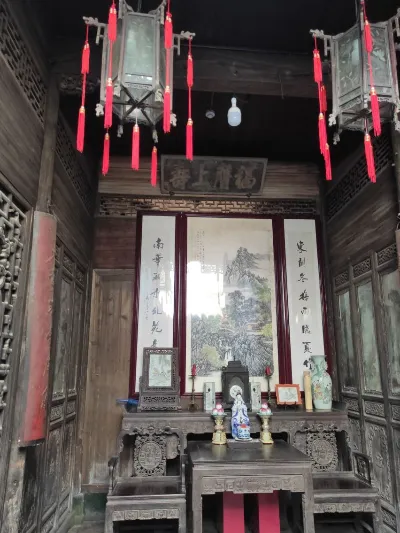
Lüfu Tang (Blessing Hall)
It was the private residence of Hu Shangzeng, the highest-ranking official in Xidi (a second-rank official in the Qing Dynasty). Built during the Kangxi reign of the Qing Dynasty (1662-1722), it is a residential building with front and back halls and a three-bay, three-story structure, tall and spacious, elegant and simple. In the front hall, there hangs a large central painting of "Pine and Crane", and above the central painting is the plaque "Lüfu Tang" with vigorous calligraphy.

Yingfu Tang (Glory and Blessing Hall)
It has a unique architectural style and decorative features, demonstrating the charm of Huizhou-style architecture.
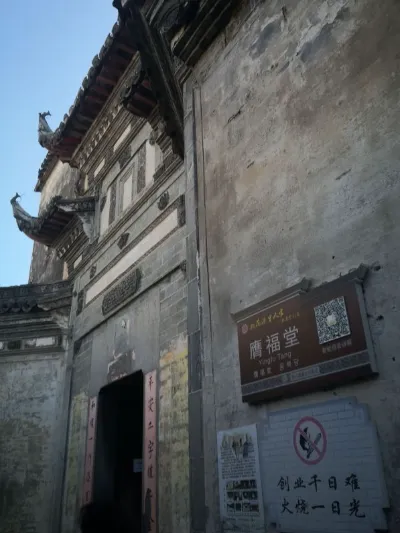
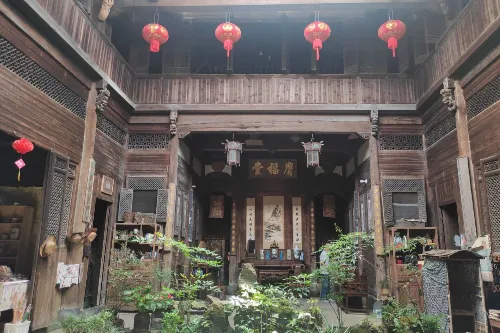
Shangde Tang (Virtue Hall)
It reflects the traditional culture and values of Xidi Village, featuring a simple architectural style and profound historical charm.

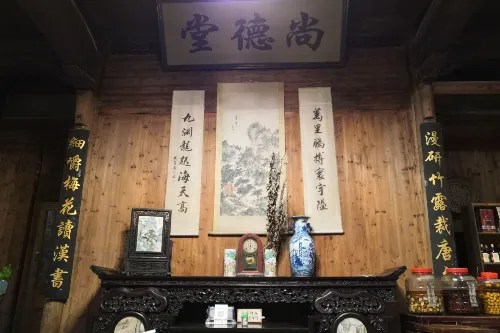
Dafu Di (Scholar's Residence)
With a neat and regular layout, it showcases the architectural system and style of its time.
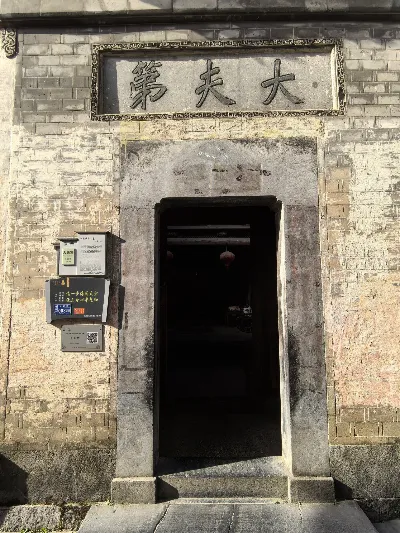
Diji Tang (Benevolence Hall)
It possesses unique architectural characteristics and historical significance of its own.
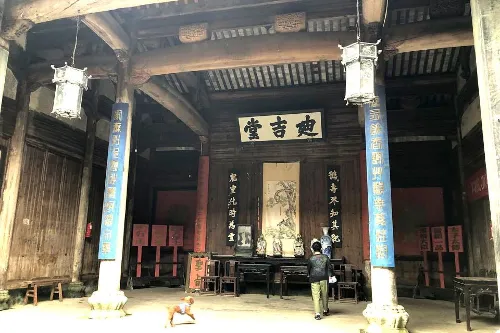
Zhuimu Tang (Admiration Hall)
The roof is adorned with overhanging eaves and upturned corners, and the main gate features a splayed archway. Wooden railings are installed outside the Sanyuan Gate under the eaves, and the splayed walls are made of polished whole pieces of Yixian marble. Inside the hall, there are portraits of Li Shimin's meritorious ministers and a enshrined statue of Li Shimin (Note: The original text mentions "李世明", which is a typo; the correct name is Li Shimin, Emperor Taizong of Tang).

Duyi Ting (Sincere Friendship Court)
Also known as Zhenshi Xiao Zhu (Pillow Stone Cottage), it was built during the Daoguang reign of the Qing Dynasty (1821-1851). It was originally the former residence of Hu Yuanxi, the youngest son of Hu Guansan (one of the six richest men in the Jiangnan region) and the son-in-law of Cao Zhenyong (Prime Minister during the Qianlong, Jiaqing, and Daoguang reigns of the Qing Dynasty), who held the official position of Tongyi Daifu (a third-rank official). The main gate of the courtyard is a brick-built splayed archway inlaid with a brick-carved horizontal plaque reading "Ziqi Donglai" (Auspicious Energy from the East). Inside the gate, the pavilion is inlaid with a scroll-shaped stone-carved door plaque inscribed with "Zhenshi Xiao Zhu" (Pillow Stone Cottage). On both sides of the gate pavilion, there are small flower vase and green leaf-shaped doorways, inlaid with brick-carved plaques reading "Yuhu" (Jade Pot) and "Yingchun" (Oriole Spring) respectively. Inside, there is a greenhouse where the owner kept flowers and plants through the winter in ancient times.
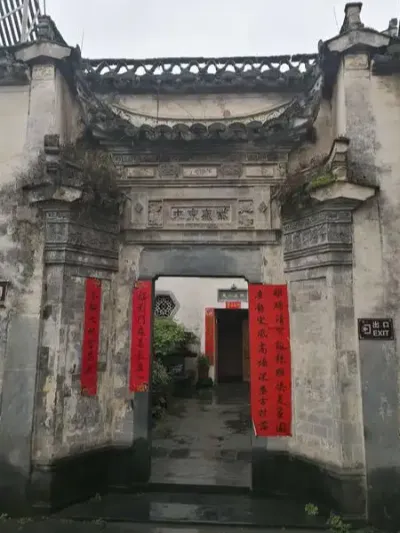
Tour Route
After entering the scenic area, visitors can start their tour from the Hu Wenguang Memorial Archway at the village entrance, then visit attractions such as the Ying Tianqi Art Museum, Kuanggu Zhai (Ancient Study), Duyi Ting (Sincere Friendship Court), Diji Tang (Benevolence Hall), Shangde Tang (Virtue Hall), and Dongyuan (East Garden). Wander along the ancient streets and lanes of the village to admire ancient residences, ancestral halls, and other buildings, and also visit Xiyuan (West Garden), Taoli Yuan (Peach and Plum Garden), Jing'ai Hall (Respect and Love Hall), etc. Finally, climb the viewing platform to overlook the panoramic view of Xidi Ancient Village. It is recommended to arrange 3-5 hours for the entire tour to fully experience the charm of the ancient village.
Travel Tips
- Learn about Huizhou-style architecture and the historical and cultural background of Xidi Village in advance to better appreciate and understand the scenic area's architecture and humanistic landscapes.
- Try to visit on weekdays or during the off-season to avoid tourist peaks, allowing for a more leisurely tour and a chance to experience the village's peaceful atmosphere.
- Consider hiring a local guide to gain in-depth knowledge of the stories and cultural connotations behind each attraction.
- Wear comfortable shoes, as touring the ancient village involves a lot of walking on blue stone-paved roads.
- Spend a night in the ancient village to experience its morning and night scenes, and feel a different atmosphere.
Notes
- Most ancient buildings in the scenic area are centuries-old; please do not touch or climb on them to avoid damage.
- Respect local customs and religious beliefs, and refrain from making loud noises or engaging in inappropriate behavior in ancestral halls and other venues.
- When purchasing souvenirs, pay attention to distinguishing quality and price to avoid unnecessary disputes.
- Protect the environment by not littering and keeping the ancient village clean.
- Follow the instructions of scenic area staff and abide by the scenic area's regulations during the tour.
Transportation
- By Air: First arrive at Huangshan Tunxi International Airport, then take a shuttle bus to Yixian County from the airport, and transfer to Xidi Ancient Village from Yixian County. Huangshan Tunxi International Airport is about 55 kilometers away from Yixian County, with a travel time of approximately 1 hour and 15 minutes.
- By Train: Take a train to Huangshan Station or Huangshan North Station. Huangshan Station is about 50 kilometers away from Yixian County; transfer to a shuttle bus to Yixian County and then to Xidi Ancient Village. Huangshan North Station is about 40 kilometers away from Yixian County, and you can also transfer to a shuttle bus to Yixian County to reach Xidi Ancient Village.
- By Self-Driving: Depart from Huangshan City, drive along G56 Hangrui Expressway to Yixian County Exit, then follow the navigation to Xidi Ancient Village Scenic Area. The entire journey is about 50 kilometers, with a travel time of approximately 1 hour. From other cities, navigate to Yixian County first, then proceed to Xidi Ancient Village.
Opening Hours
Regular opening hours: 7:30 - 17:30 (night tour light show until 20:00).
Ticket Information
Ticket price: 94 RMB per person.
You can search for the official WeChat public account "黟县徽黄旅游集团" to get the latest updates or purchase tickets online.
Online Booking
Click here to jump to the Trip.com ticketing platform for ticket purchase.


